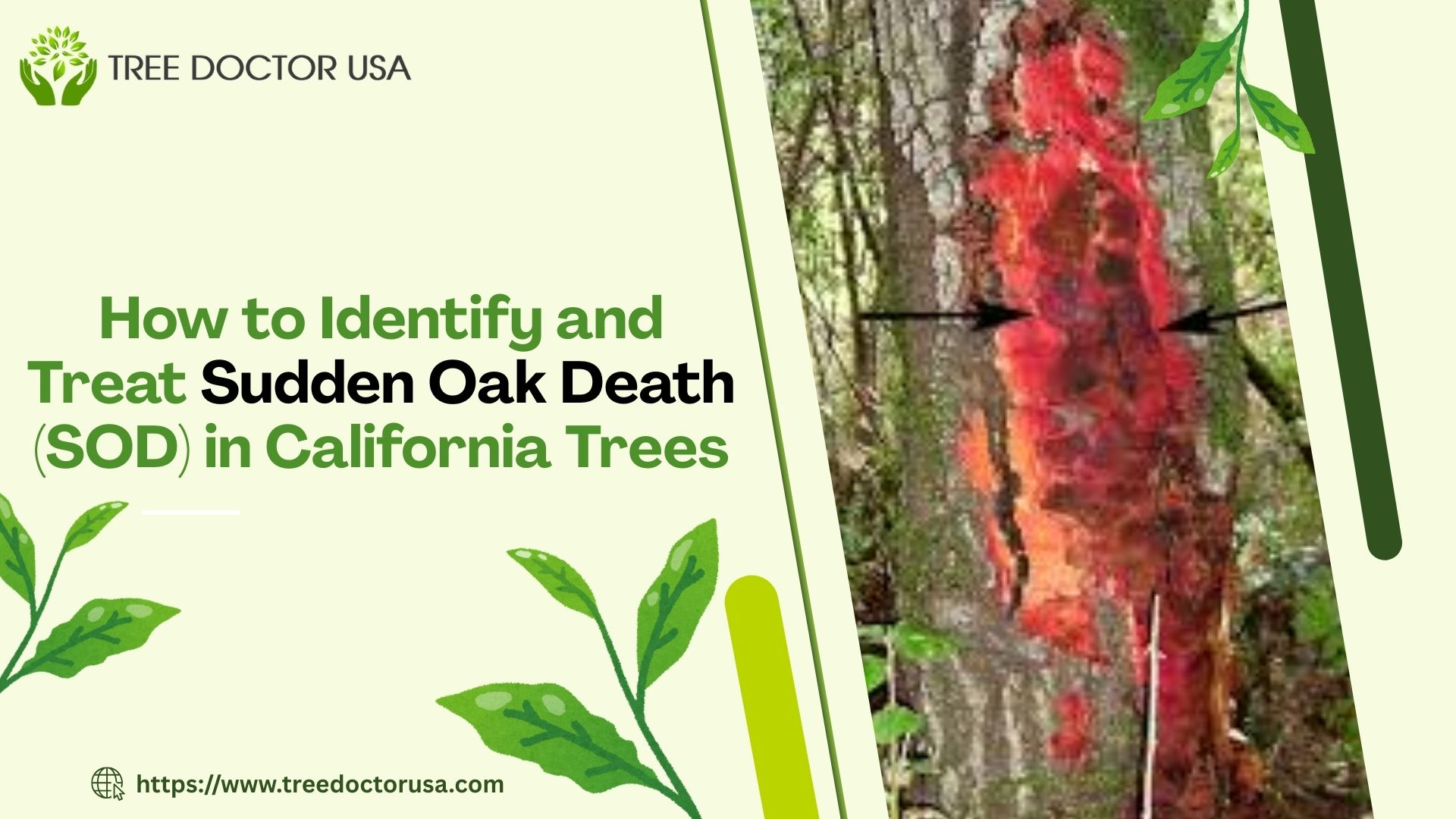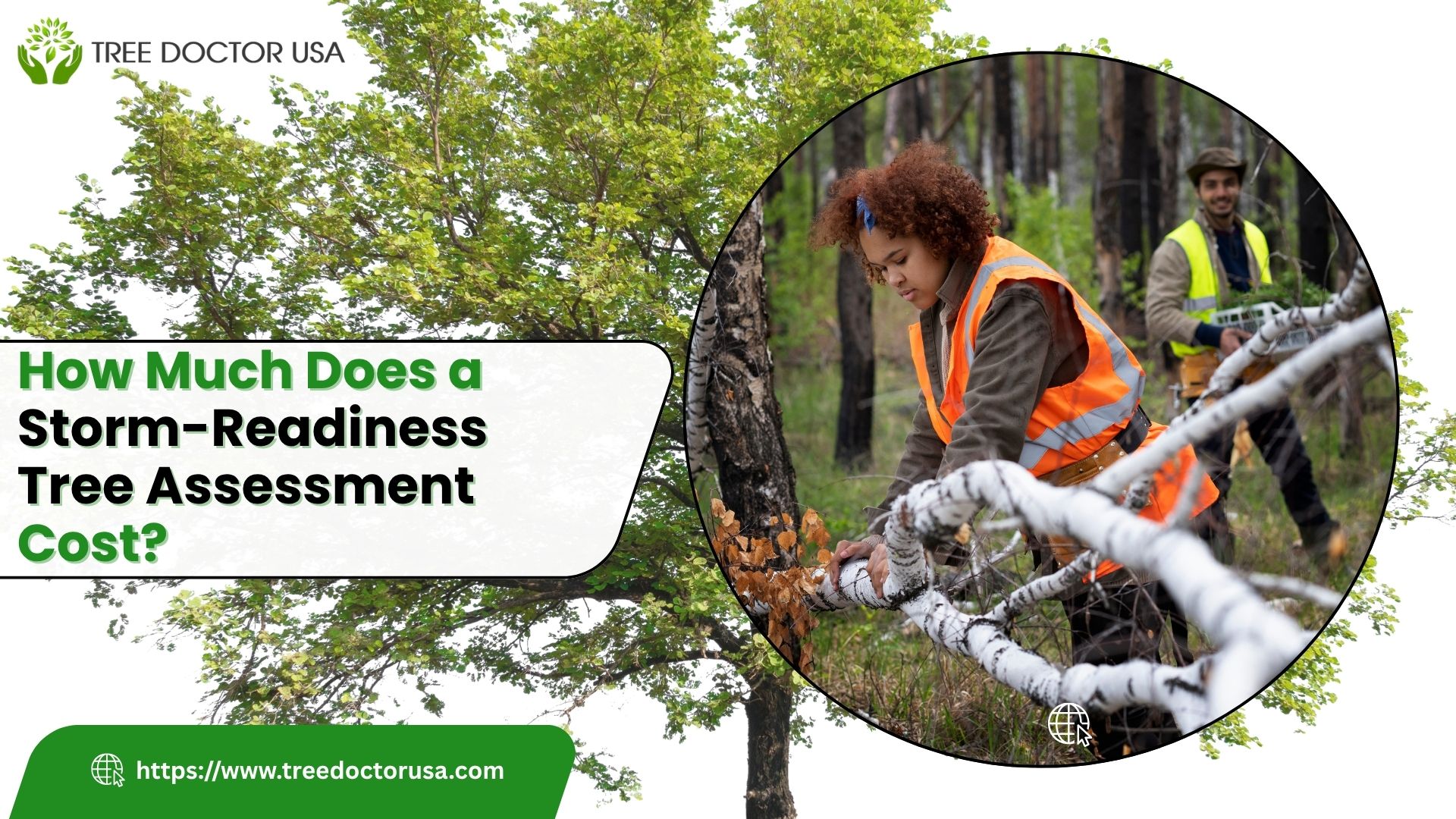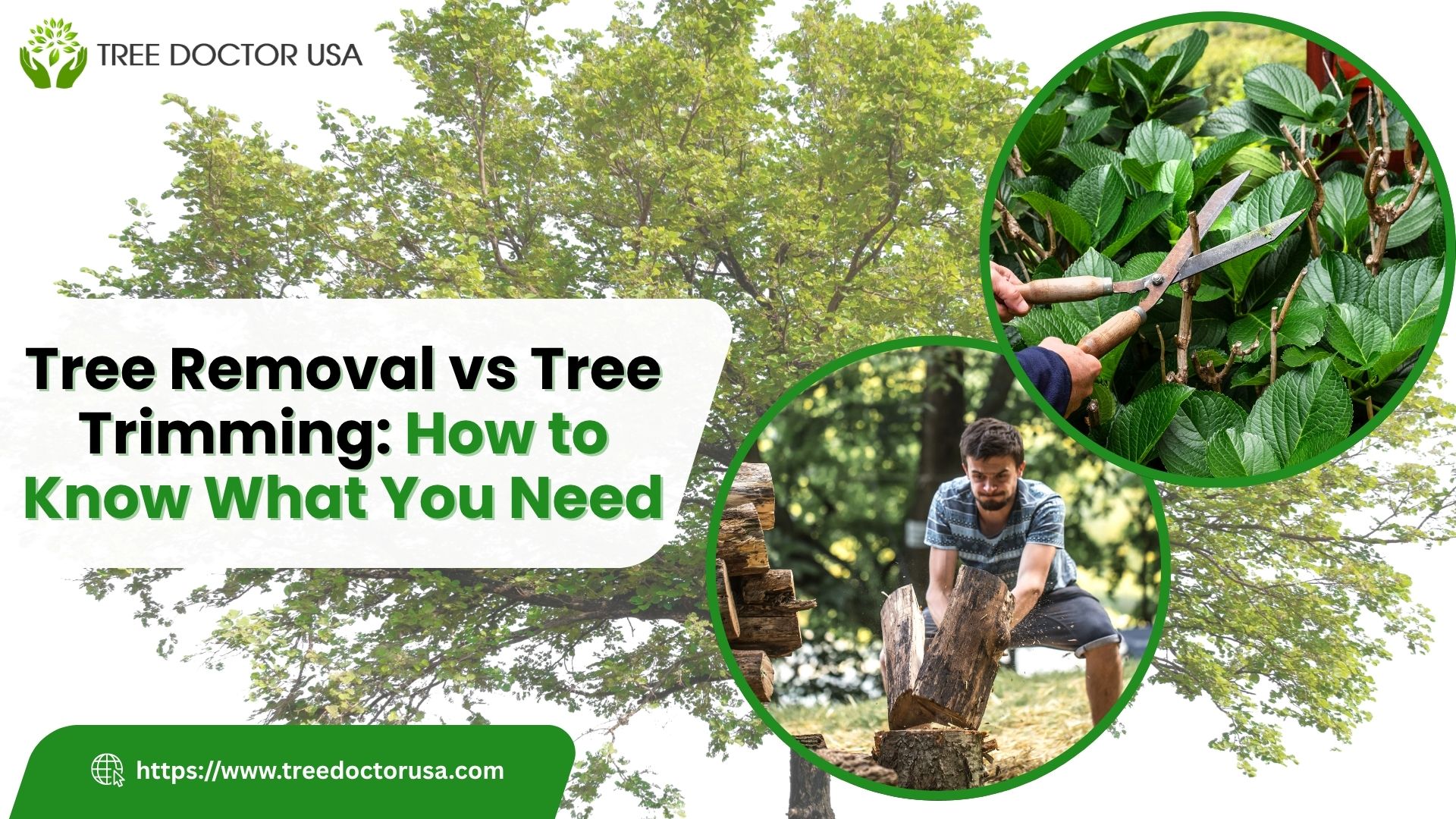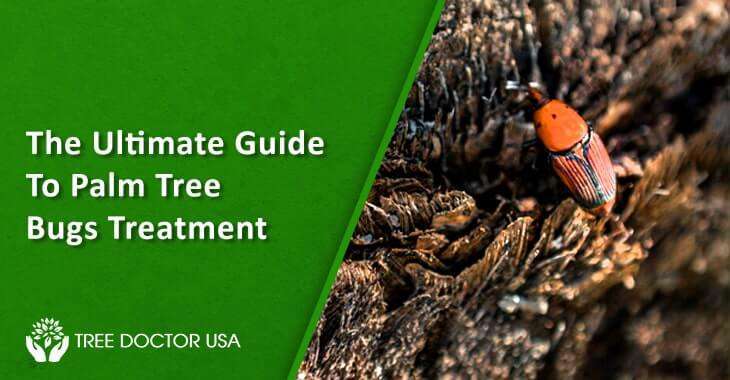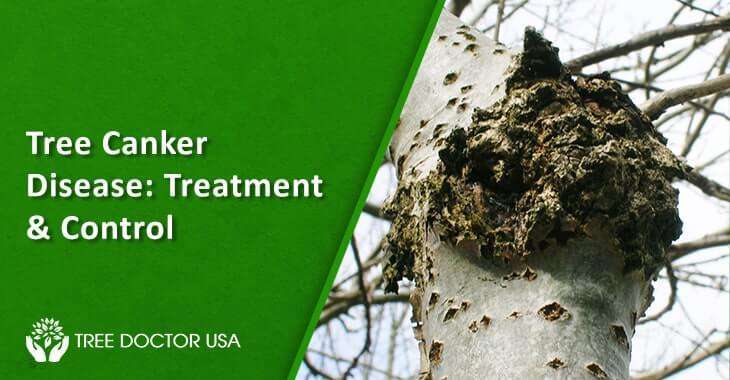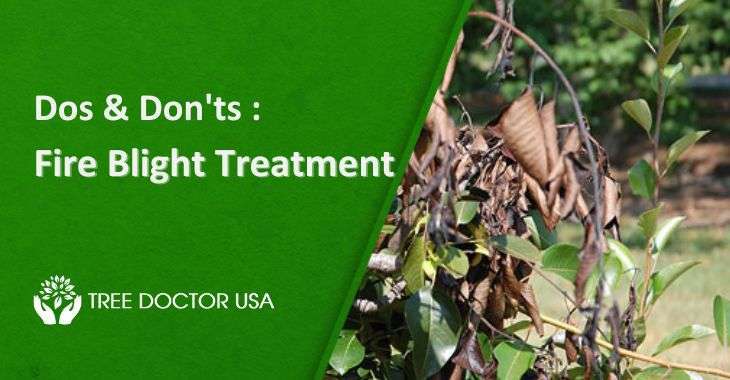How to Identify and Treat Sudden Oak Death (SOD) in California Trees
Sudden Oak Death (SOD) has rapidly become one of the most destructive tree diseases in California. Responsible for killing millions of oak and tanoak trees across the state, the disease continues to spread in both residential landscapes and forested areas. Early identification and proper Sudden Oak Death treatment are essential if you want to protect your property, prevent tree loss, and reduce the spread of this aggressive pathogen.
This guide explains everything California homeowners need to know — symptoms, high-risk areas, testing options, SOD treatment solutions, and how to prevent Sudden Oak Death from spreading.
What Is Sudden Oak Death (SOD)?
The pathogen behind SOD: Phytophthora ramorum
Sudden Oak Death is caused by Phytophthora ramorum, a water mold (oomycete) that thrives in cool, moist environments. Unlike fungi, this pathogen lives in soil, water, plant debris, and on the leaves of several host plants.
How SOD entered and spread through California forests
The disease was first detected in California in the mid-1990s and has since expanded throughout coastal regions. It spreads quickly through wind-driven rain, contaminated soil, and infected plant material.
Why California trees are particularly vulnerable
California’s mix of coastal moisture, dense forests, and abundant bay laurel trees creates ideal conditions for the pathogen to survive—and spread.
How Sudden Oak Death Spreads in California
Wind-driven rain and moisture as main spread factors
Rain splashes spores from infected leaves onto nearby trees. This is why the disease is especially active during wet seasons.
Soil and water movement in infected areas
Spores live in soil and can move through runoff, irrigation, shared pathways, and contaminated tools.
Human actions that accelerate spread
Hiking boots, car tires, landscaping tools, and firewood can all carry the pathogen from one location to another without visible signs.
The role of bay laurel in carrying and transmitting the pathogen
Bay laurel trees do not usually die from SOD, but they act as major “reservoir hosts,” carrying and spreading the disease to susceptible oak trees.
California Areas Most Affected by Sudden Oak Death
Counties with highest infection rates
The disease is most common in coastal counties, including:
- Monterey
- Santa Cruz
- Santa Clara
- Marin
- Sonoma
- Napa
- Mendocino
- Humboldt
Coastal zones where SOD thrives
Moist coastal canyons, shaded forests, and riparian areas have the highest infection density.
How to know if your property is in a high-risk zone
If your property is near bay laurel trees, moist forested areas, or within a known SOD county, regular inspections are essential.
Tree Species Vulnerable to Sudden Oak Death
Oak species commonly affected in California
- Coast live oak
- California black oak
- Shreve oak
- Canyon live oak
These oaks can develop lethal trunk infections.
Tanoak mortality from SOD
Tanoaks are some of the most severely affected and can die within a few years of infection.
Bay laurel and other foliar hosts
Foliar hosts may not die but help spread the disease, including:
- California bay laurel
- Rhododendron
- Camellia
- Huckleberry
Resistant or less susceptible tree species
Some trees show natural resistance and may survive even in high-risk areas.
Early Symptoms of Sudden Oak Death to Watch For
- Bleeding cankers and dark sap on the trunk
- One of the earliest major symptoms
- Dark, reddish-brown, or black sap oozes from infected bark
- Often appears without any visible injury
- Can spread vertically down the trunk
- Crown dieback and thinning foliage
- Progressive canopy thinning
- Yellowing, curling, or dry leaves
- Dead branch tips and patchy crown loss
- Leaf browning or sudden wilt
- Leaves turn brown suddenly and remain attached
- Creates the “sudden death” appearance
- Usually occurs in mid- to late-stage infection
- Twig and leaf blight on bay laurel
- Brown or black patches along leaf midrib
- Spots may expand into large dead areas
- Indicates the presence of the pathogen nearby
- Secondary pests appearing after SOD
- Bark beetles, ambrosia beetles, and wood-boring insects
How to Confirm If Your Tree Has Sudden Oak Death
- Visual inspection signs homeowners should check
- Bleeding sap or oozing cankers
- Sudden canopy thinning or browning
- Presence of bay laurel trees within 100 ft
- Rapid decline during or after wet seasons
- When professional diagnosis is needed
- Symptoms overlap with drought, root rot, and other diseases
- Arborists use tools, moisture meters, and experience to confirm
- Early confirmation improves treatment success
- Lab testing options in California
- Bark, leaf, or soil samples can be tested
- Labs use PCR and culture tests for accuracy
- Reliable for confirming Phytophthora ramorum
- What SOD Blitz testing programs are
- Community-based testing events across California
- Helps map and track disease spread
- Run by universities and research organizations
Sudden Oak Death Look-Alike Diseases
- Anthracnose symptoms vs SOD
- Leaf spotting, blotches, and minor twig dieback
- Rarely produces trunk cankers
- Typically seasonal and less severe than SOD
- Drought stress damage
- Causes wilting and leaf browning
- No sap ooze or bleeding cankers
- Often improves with deep watering
- Other Phytophthora infections
- Lead to root rot, not trunk infections
- Causes slow decline, yellow leaves, and poor growth
- Can coexist with SOD but is different diagnostically
- When to get expert confirmation
- Symptoms appear during rainy season
- Multiple trees show decline
- Bleeding cankers and bay laurel presence
Does Sudden Oak Death Kill Trees? How Fast It Spreads
- Typical infection-to-death timeline
- Trees may decline over 1–5 years
- Faster in moist, shaded environments
- Why some oaks die faster than others
- Higher stress levels
- Younger or damaged trees
- Closer proximity to bay laurel hosts
- Environmental conditions that worsen infection
- Wet winters and heavy rainfall
- Poor drainage and damp soil
- Dense vegetation or limited airflow
- Risk of hazardous trees
- Weak trunks and branches
- Increased risk of falling or dropping limbs
- Dead trees require professional removal
Treatment Options for Sudden Oak Death in California
Protecting your trees before Sudden Oak Death infection is the most effective way to stop the disease from spreading. Simple steps like reducing moisture, managing bay laurel hosts, and improving overall tree health can dramatically lower the risk. With the right preventive care plan, homeowners can safeguard high-value oaks long before symptoms ever appear.
- Phosphonate (Agri-Fos) spray treatment
- Boosts immune response
- Slows disease progression
- Works best in early infection stages
- Trunk injection vs bark application
- Trunk injection:
- Deeper, more effective protection
- Higher absorption rate
- Bark spray:
- Non-invasive
- Suitable for many species
- Effective for preventative care
- Trunk injection:
- Best time of year to apply SOD treatments
- Late fall to early winter
- Early spring before active growth
- How often treatments need to be repeated
- Every 12–24 months depending on disease pressure
- High-risk trees may need annual treatment
- Limitations
- No cure exists
- Treatments manage—not eliminate—the disease
- Works best when combined with prevention
Best Prevention Tips to Protect Your Trees from SOD
- Bay laurel removal or thinning
- Remove or prune bay laurels within 30 feet
- Reduces transmission significantly
- Creating defensible space
- Maintain spacing between oak and bay laurel species
- Reduces humidity and improves airflow
- Cleaning boots, tools & equipment
- Disinfect after hiking or yard work
- Prevents spreading infected soil or leaves
- Improving drainage and reducing moisture
- Reduce standing water around tree base
- Keep mulch away from trunk
- Improve soil aeration
- Mulching and soil care
- Support root health
- Promote stronger disease resistance
- Avoid overwatering
How Homeowners Can Reduce the Risk of SOD on Their Property
- Annual tree inspections
- Early detection catches infections before they spread
- Arborists evaluate disease severity and safety risks
- SOD monitoring & early detection
- Regularly check bay laurel leaves for new lesions
- Inspect oak trunks for bleeding cankers
- Treatment programs for at-risk properties
- Scheduled phosphonate treatments
- Annual or biannual monitoring
- Protecting heritage and landmark oaks
- Prioritize old, historic, or high-value trees
- Implement customized long-term health plans
When to Call a Certified Arborist for SOD Evaluation
Signs that require immediate help
- Continuous bleeding sap
- Severe crown dieback
- Bark beetle activity
- Nearby bay laurel with blight symptoms
Risks of delaying treatment
Once the pathogen establishes a deep trunk infection, survival chances decrease.
Cost of SOD inspections in California
Costs vary but are typically affordable compared to tree removal.
How arborists diagnose and treat SOD
Professionals use trunk-safe tools, lab testing, and advanced phosphonate applications.
Conclusion
Sudden Oak Death is one of California’s fastest-spreading tree diseases, but early action can save your oaks. By recognizing symptoms quickly, reducing moisture, managing bay laurel hosts, and starting timely SOD treatment, you can greatly improve tree survival.
Regular inspections and preventive phosphonate applications offer the best protection. If you spot bleeding cankers, crown dieback, or bay laurel blight nearby, contact a certified arborist right away to prevent further damage and keep your landscape safe.
Need Expert Sudden Oak Death Treatment in California?
Protect your oak trees before the damage becomes irreversible.
Contact Tree Doctor USA today for professional SOD diagnosis and treatment.
FAQs
No, there is no complete cure, but treatments can slow disease progression and save at-risk trees.
Yes. Shoes, clothing, tools, and pets can carry infected soil or leaves.
Not always. Mild-to-moderate infections can be managed with treatment. Severely infected or hazardous trees may need removal.
It can persist in soil and plant debris for several years under moist conditions.
Bay laurel (Umbellularia californica) is the primary host responsible for spreading SOD in California.

